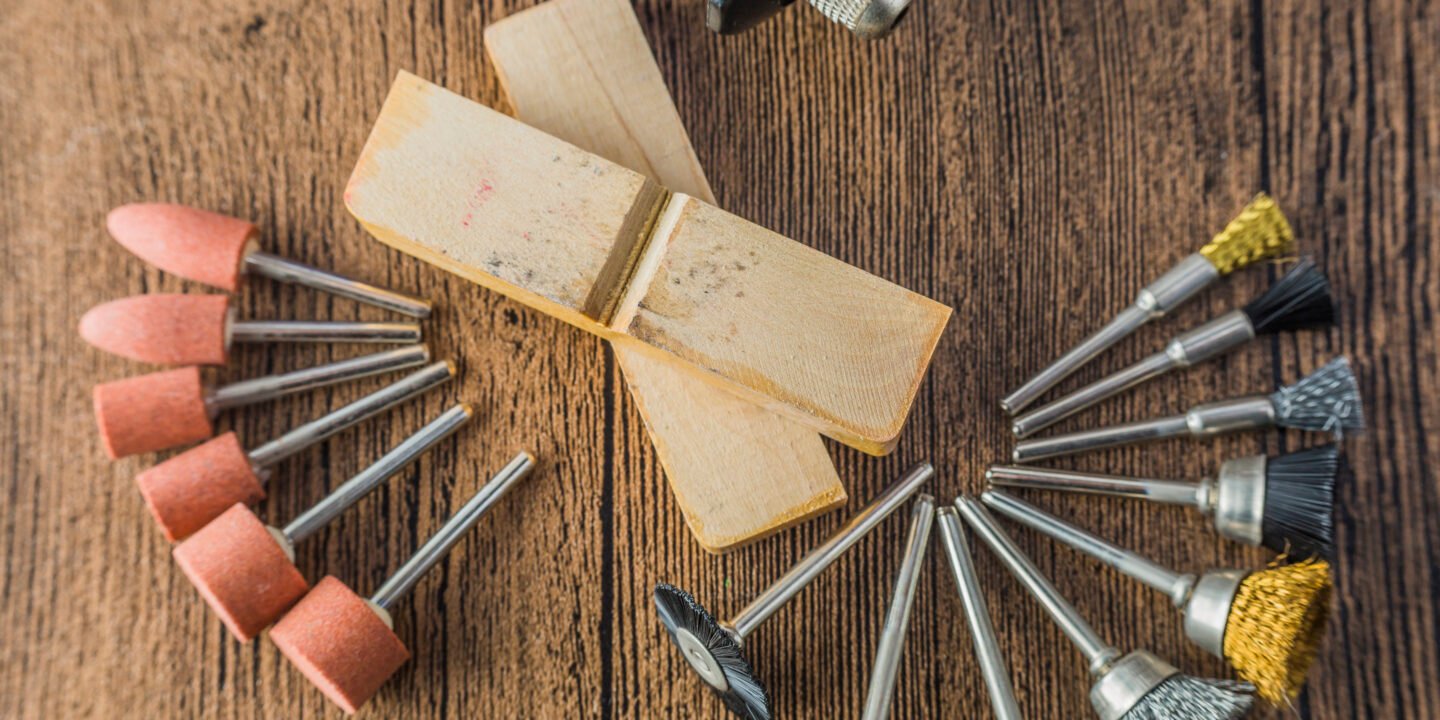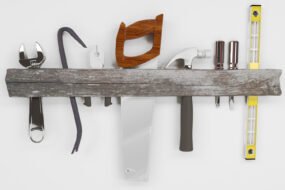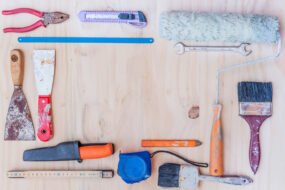
Embarking on DIY projects can be incredibly rewarding, whether you’re crafting home decor, building furniture, or tackling renovations. To set yourself up for success, having the right tools and materials at your disposal is crucial. This comprehensive guide covers everything you need to kickstart your DIY journey, categorized by project type and skill level. Let’s dive into the essential tools and materials that every DIYer should consider.
1. Basic Tools for Every DIYer
Regardless of the type of projects you plan to undertake, having a solid foundation of basic tools is essential. These tools can help you handle a variety of tasks, from simple crafts to more complex home improvement projects.
A. Hand Tools
- Tape Measure:
- A reliable tape measure is a must-have for accurate measurements. Look for one that is at least 25 feet long with clear markings.
- Utility Knife:
- Great for cutting various materials like cardboard, paper, and plastic. Choose one with a retractable blade for safety.
- Scissors:
- Invest in a good pair of fabric and general-purpose scissors. A dedicated pair for fabric will help avoid dulling from cutting paper.
- Screwdrivers:
- A set of both flathead and Phillips screwdrivers in various sizes will cover most of your needs. Consider a magnetic tip for ease of use.
- Hammer:
- A standard claw hammer is essential for driving nails and removing them. Choose a comfortable grip for better control.
- Pliers:
- A set of pliers, including needle-nose and slip-joint, will help with gripping, twisting, and cutting wires.
- Level:
- A level ensures your projects are straight and aligned. A small torpedo level is handy for tight spaces.
- Drill:
- A cordless drill is invaluable for drilling holes and driving screws. Invest in a set of drill bits and a variety of screwdriver attachments.
B. Power Tools
- Circular Saw:
- Perfect for cutting wood, plywood, and other materials. Look for a lightweight model that’s easy to maneuver.
- Sander:
- An electric sander can save time and effort in smoothing surfaces. Consider a palm sander for small projects and a belt sander for larger surfaces.
- Jigsaw:
- Great for making curved or intricate cuts in wood and other materials. A variable-speed option can enhance control.
- Miter Saw:
- If you’re working with trim or making precise crosscuts, a miter saw is essential. Look for one with adjustable angles for versatility.
- Router:
- A router is useful for shaping edges and creating decorative profiles on wood. Choose one with variable speed settings for different tasks.
2. Essential Materials for DIY Projects
Having the right materials on hand is just as important as having the right tools. Below is a list of essential materials you should consider stocking in your DIY arsenal.
A. Wood and Plywood
- Plywood:
- Versatile and sturdy, plywood is great for furniture, cabinets, and various projects. Choose the thickness based on your project needs.
- Dimensional Lumber:
- Common sizes like 2x4s and 1x3s are useful for building frames, shelves, and more. Select untreated lumber for indoor projects and treated for outdoor use.
- MDF (Medium Density Fiberboard):
- Smooth and easy to work with, MDF is ideal for cabinetry and detailed projects. Keep in mind that it’s heavier and less durable than plywood.
B. Fasteners and Adhesives
- Nails and Screws:
- Stock a variety of nails and screws in different sizes. Choose galvanized screws for outdoor projects to prevent rust.
- Wood Glue:
- A strong adhesive for bonding wood pieces together. Look for a PVA (polyvinyl acetate) glue for indoor use.
- Construction Adhesive:
- This versatile adhesive is great for bonding a variety of materials, including wood, drywall, and concrete.
- Painter’s Tape:
- Essential for masking off areas when painting or staining. Choose a high-quality tape for clean lines.
C. Finishing Materials
- Paint and Primer:
- Invest in good-quality paint and primer for various surfaces. Latex paint is ideal for indoor projects, while exterior paint withstands the elements.
- Stains and Sealers:
- For wood projects, choose stains to enhance the natural beauty of wood, and sealers to protect it.
- Caulk:
- Use caulk to fill gaps and cracks in woodwork, moldings, and around windows. Silicone caulk is great for wet areas.
3. Specialty Tools for Specific Projects
Depending on your interests and the types of projects you want to tackle, you may want to invest in specialty tools. Here are some tools for various DIY tasks.
A. Sewing and Fabric Projects
- Sewing Machine:
- If you’re into fabric projects, a sewing machine can open up a world of possibilities. Look for a model with various stitch options.
- Cutting Mat:
- A self-healing cutting mat protects your surfaces and extends the life of your blades when cutting fabric or paper.
- Fabric Marking Tools:
- Use fabric markers or chalk to mark patterns and cutting lines on your fabric without leaving permanent marks.
B. Gardening Projects
- Garden Tools:
- Essential tools include trowels, pruners, and weeding tools. A sturdy pair of gardening gloves will also protect your hands.
- Planters and Soil:
- Choose pots that fit your plants’ needs, and invest in good-quality potting soil for optimal growth.
C. Crafting Projects
- Hot Glue Gun:
- Perfect for quick projects and assembling crafts. Keep a supply of glue sticks on hand for various applications.
- Craft Knife:
- Useful for precision cutting in paper crafts, model building, and more. Always use a cutting mat to protect surfaces.
- Stamping Supplies:
- For card-making or scrapbooking, invest in rubber stamps, ink pads, and various paper types.
4. Organizing Your Tools and Materials
Once you have your tools and materials, keeping them organized is crucial for efficiency. Here are some tips for organizing your DIY space.
A. Storage Solutions
- Toolboxes:
- Use a sturdy toolbox for storing hand tools. Choose one with compartments for smaller items.
- Shelving Units:
- Install shelving to store materials, paint cans, and larger tools. Clear bins can help keep everything sorted and visible.
- Pegboards:
- A pegboard is an excellent way to hang tools and keep them accessible. You can customize it with hooks for various tool types.
B. Labeling
- Label Containers:
- Clearly label bins and containers for quick access to your materials. This will save time when you’re in the middle of a project.
- Create a Tool Inventory:
- Maintain an inventory of your tools and materials, noting what you have and what needs replenishing. This can help avoid purchasing duplicates.
5. Safety Gear for DIY Projects
Safety should always be a priority in any DIY project. Make sure you have the necessary safety gear to protect yourself.
A. Personal Protective Equipment (PPE)
- Safety Goggles:
- Protect your eyes from dust, debris, and splashes when using power tools or working with chemicals.
- Dust Masks:
- Use dust masks or respirators when sanding, painting, or working with materials that produce dust or fumes.
- Ear Protection:
- If you’re using loud tools like saws or drills, wear earplugs or noise-canceling headphones to protect your hearing.
B. First Aid Kit
- Stock a First Aid Kit:
- Keep a well-stocked first aid kit in your workspace. Include band-aids, antiseptic wipes, gauze, and other essentials.
6. Conclusion
Having the right tools and materials is the backbone of any successful DIY project. Whether you’re just starting or looking to expand your crafting arsenal, this comprehensive list will guide you in building a solid foundation for all your DIY endeavors.
From basic hand tools to specialty equipment, being well-prepared not only enhances your efficiency but also boosts your confidence as you tackle new projects. Remember to prioritize safety and organization to create an enjoyable crafting experience.
Now that you’re equipped with the essentials, it’s time to unleash your creativity and start crafting! Happy DIYing!








